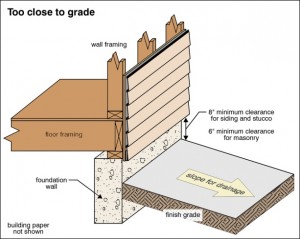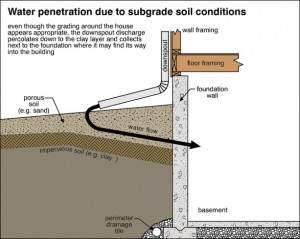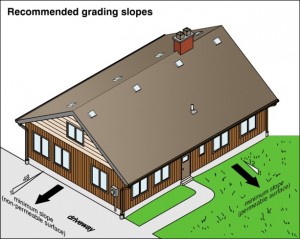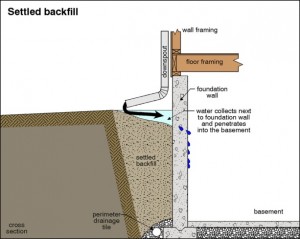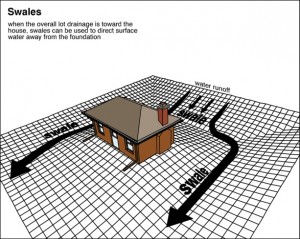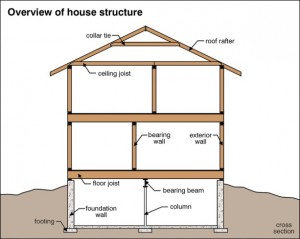Although landscaping is so very important to a dry basement, sometimes other things outside the home can cause water to work its way inside. Because of difficulty and cost, people are often hesitant to consider the negative impact hardscaping can have on moisture intrusion. What I’m talking about here are:
Just like the earth, over time these wood, asphalt, and concrete surfaces can settle. Often the settlement will either puddle water alongside or actually drive water towards the foundation. As I said these hard surfaces can be expensive to remove and replace. For this reason, most of the time, homeowners will leave the settled hardscaping and try anything and everything else to try to correct the problem…and it never works! There is a core principal here and that is, if water is being driven towards the foundation, at some time, it is bound to come into the basement. It might not be in normal rain or snow thaw, but during in-climate conditions it will.
That’s why if you ask a homeowner selling their house if they have moisture in the basement, their immediate reaction will be no. Then when they think about it for a moment, they will say something like well maybe a little bit on real heavy rainfalls or only when the downspouts are disconnected or only when it rains really hard from the north. What they are saying is the landscape and hardscape are not sloped adequately to handle large volumes of water. Homeowners, home buyers, and real estate professionals don’t expect basements or crawl spaces to be dry some of the time or even most of the time. Today, these people demand that these below grade spaces be dry ALL of the time.
So the grounds surrounding the home are very important to protect against moisture intrusion…but that’s just the beginning!
Doug & Julie Hastings
Your House Whisperers
Minnesota Home Inspection Services




